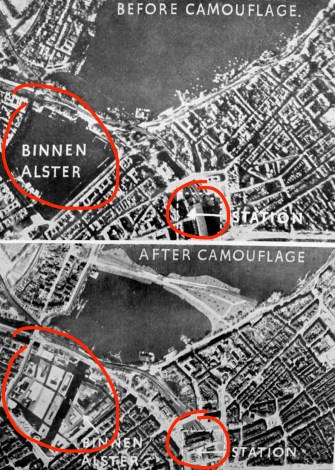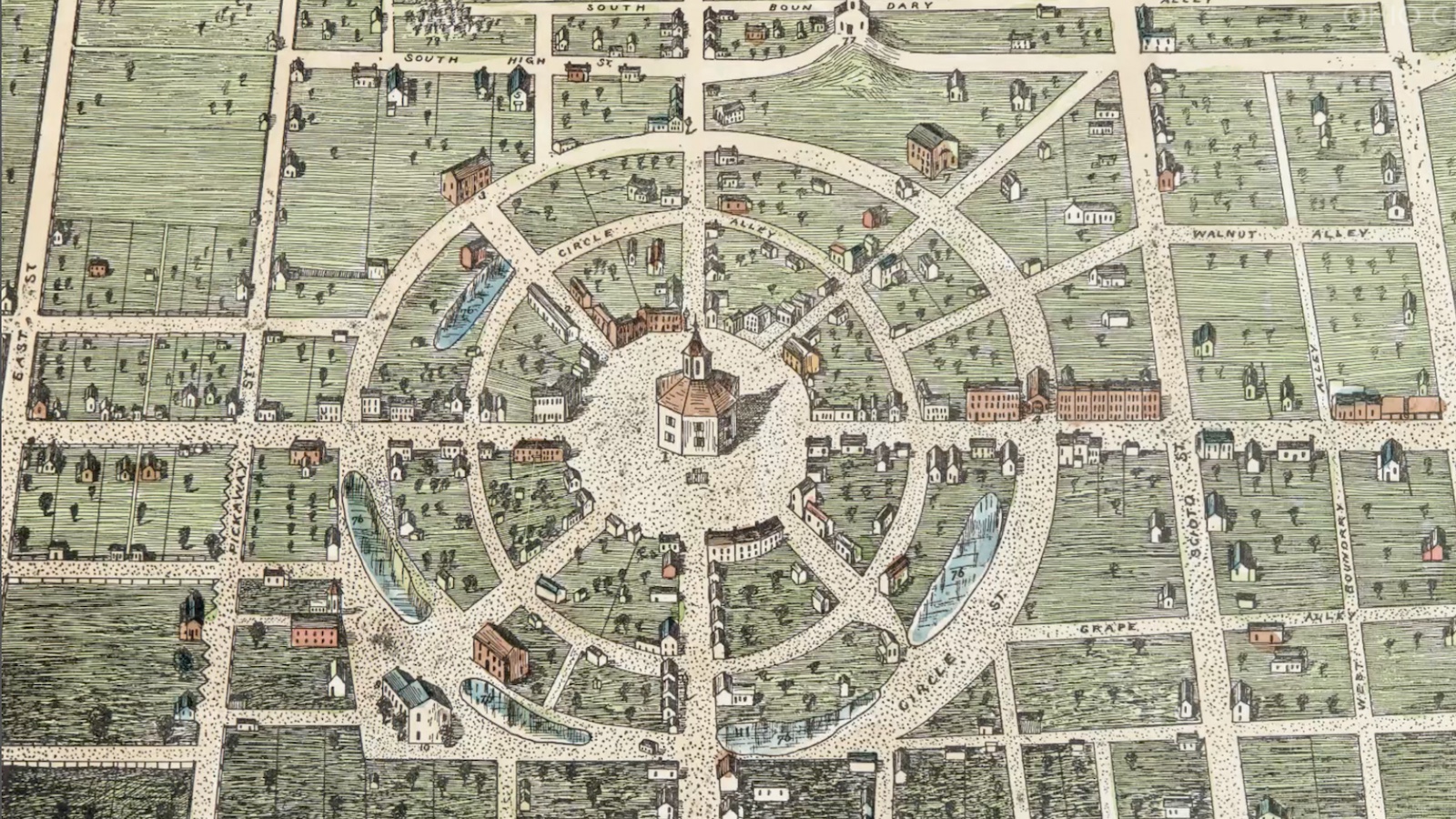How the Nazis faked part of Hamburg to fool Allied bombers

Image: Reddit
- In 1941, the Nazis camouflaged an entire lake at the centre of Hamburg.
- A painted tarp was made to look like a bunch of city blocks from above, in the hope of misdirecting RAF bombers.
- But the Brits weren't fooled, and Hamburg would later suffer horrific firebombing.
Operation Invisibility Cloak
Now you see it, now you don’t: these images, taken by the Royal Air Force in 1941, show how the same part of Hamburg suddenly looked very different from above.
- The most notable difference is the disappearance of the Binnenalster, one of two artificial lakes that mark the center of Hamburg. It has been covered to look like regular city blocks from above.
- Hamburg’s Hauptbahnhof, the city’s central train station, clearly visible on the top image, has also been camouflaged (although perhaps less effectively).
- A fake bridge, made from wood, wire and thatch, has been slung across the lower part of the Außenalster – the other, larger lake in central Hamburg. By re-creating the actual, hidden Lombardsbrücke, the camouflage operation creates a fake Binnenalster, just north of the real one.
This large-scale deception was meant to deceive Allied bombers into dropping their payload on strategically less important parts of the city. The Nazis called it Operation Tarnkappe (‘Operation Invisibility Cloak’), but that name was far too optimistic.

RAF Lancaster bomber over Hamburg during an attack on the night of 30-31 January, 1943.
Image: Imperial War Museum – public domain.
Many attempts at deception
Firstly, because the British bombers targeting Hamburg didn’t orient themselves on the Alster lakes. They were guided in by the Elbe, Hamburg’s major river.
But most of all, because the Brits caught on quickly to the deception. In fact, the London papers reported on the operation soon after its completion. On July 1941, several published these ‘before’ and ‘after’ images.
Operation Tarnkappe was but one of many attempts to deflect the attention of Allied bombers from valuable targets on the ground. Just around Hamburg, the Nazis faked 80 air strips and 32 industrial and traffic installations, while they attempted to cloak real factories, military installations and even Hamburg City Hall.
When the Alster froze in the cold winter of 1940/41, the Nazis planted hundreds of pine trees on the Alster, hoping to trick Allied pilots into thinking they were flying over a forest, instead of the centre of Hamburg.
None of that really made a difference.

As the range of Allied fighter craft expanded, bombing raids deep into Germany became relatively safer for the air crews.
Image: Reddit
Coming within range
As a major industrial center, home to shipyards and harbor for U-boats, the port city of Hamburg was an important target for Allied bombing raids throughout the war.
As British and American airplane technology advanced, Hamburg came within easier range of the Allied bombing effort.
After concentrating on the industrial Ruhrgebiet in western Germany, closer to the UK, Allied Bomber Command eventually started paying its deadly visits to Hamburg.
In July 1943, the Allies unleashed Operation Gomorrah, history’s heaviest aerial bombardment yet. It created a huge firestorm that killed more than 42,000 civilians and completely destroyed 21 km2 (8 sq. mi) of the city.

The district of Eilbek, totally wiped out by the firestorm caused by Operation Gomorrah.
Image: Imperial War Museum – public domain.
Payback for Coventry
During the worst night of the attacks, asphalted streets burst into flame, the fiery tornados swept people up into the sky, and many more died of asphyxiation in bomb shelters as the fires consumed all the oxygen in the city above.
A million people fled the city, which saw its production capacity severely handicapped for the rest of the war. After the war, the level of destruction was compared to that of Hiroshima.
Destroying further German cities by firestorm was subsequently called ‘hamburgisation’ by the Allies; a reply in kind to Joseph Goebbels’ cynical invention of the verb ‘coventrisieren’ to describe the wholesale destruction of a city by aerial bombardment (in reference to the German air raid on Coventry of 14 November 1940).

Central Hamburg today, with the Außenalster and Binnenalster – and even the train station – clearly visible.
Image: Google Earth
Hamburg, uncloaked
Strange Maps #1015
Got a strange map? Let me know at [email protected].






